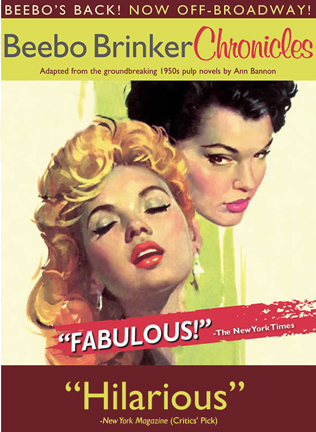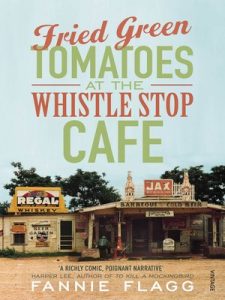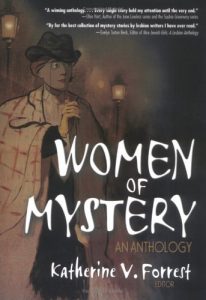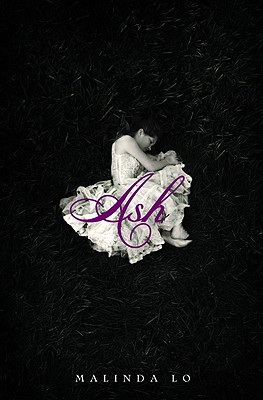If you haven’t read one of my joint review posts, this is how it goes: me and another blogger both read pick a lesbian book to read at the same time, then we discuss it, either through instant messages or by email. Anna from the feminist librarian read Beebo Brinker by Ann Bannon with me, though I’m very late in posting our conversation. I mark for spoilers, so highlight if you’d like to read them, or head over to the feminist librarian for the uncensored version.
 Anna: As a starter question, I’d be interested to know what you thought about the way Bannon portrays her character’s discovery of her same-sex desires (especially the way it is mediated to some extent by her mentor/roommate). It was an interesting contrast to the way the girls in our YA novels came to terms with their sexual orientation — primarily through their interaction with other girls and their own internal self-reflections.
Anna: As a starter question, I’d be interested to know what you thought about the way Bannon portrays her character’s discovery of her same-sex desires (especially the way it is mediated to some extent by her mentor/roommate). It was an interesting contrast to the way the girls in our YA novels came to terms with their sexual orientation — primarily through their interaction with other girls and their own internal self-reflections.
Danika: You’re right, Beebo Brinker does explore a different way of coming to terms with her sexuality. It reminds me of the Well of Loneliness-style inversion theory of lesbianism, because she seems to really see her own (masculine) body as almost dictating her sexuality, and femme lesbians in this book, too, seem to be at least a little bit doubted, or seen as less queer. Beebo seems to discover her sexuality because of her appearance, not so much in relation to other people, which is interesting from a modern perspective, because we’ve really been trying to separate sexuality from gender identity. These earlier novels don’t do that, and it’s hard to separate a character’s gender identity from their sexuality, especially since they don’t even have the vocabulary for it.
The roommate is interesting, too, because it offers another instance of queer community, which has had different portrayals in the joint reviews I’ve done. Beebo Brinker has a primarily positive portrayal of community, with Beebo’s roommate as a mentor and guide, but it may also be because her roommate was a gay man, and therefore wasn’t directly competition…?
Anna: I think you’re right about Beebo (the character) being written in a way that signals her sexual orientation through her gender identity. That is, she’s a tomboy therefore she’s going to be gay and like girls sexually. There’s a fancy term for that concept of gender and sexual identity that I’m completely blanking on right now, but basically it’s a way of mapping sexual orientation onto the binary system of gender so that lesbian women = masculine (male-identified) and gay men = feminine (female-identified). This even turns up in science — like actual scientific theories — about brain chemistry. The assumption is that the brains of lesbian women will be organized more like the brains of straight men than they will straight women. That was an assumption that was pretty popular in the mid-twentieth century (and still is today). I imagine Anne Bannon didn’t even notice she was making those assumptions when she wrote the character. Whereas to us they’re glaringly obviously and seem clunky and stereotypical.
The other thing that’s stirred into the mix, although Bannon doesn’t come out and use these terms (at least not that I remember) is the butch/femme subculture of the pre-Stonewall era. We still have butch/femme as a subculture today, but it’s only part of the much larger queer community. From what I understand, the lesbian subculture of mid-century America was pretty saturated with butch/femme identities and role-playing. Even if you didn’t necessarily feel comfortable with either of those roles, you sort of had to pick one in order to situate yourself within the lesbian subculture. I’m probably overgeneralizing … but as I was reading Beebo I did think of that, and about the way in which Beebo is set up from the beginning as a masculine-identified lesbian, whereas her lovers are all female-identified.
And at least two of them (as you point out) are bi- or fluid (in today’s terminology) … the femme fatale whose name I’m temporarily forgetting and Venus, the film actress. Paula, from what I remember, is pretty confirmed in her interest exclusively in women, and seems interested in both femme women and butch women. So there aren’t necessarily any hard and fast rules in Bannon’s literary world about butch women only dating femme women, or vice versa. But there does seem to be a fairly firm … shall we call it a “typology” of lesbians being outlined in the novel? It sort of reads as an identification guide in places. For young lesbians in New York: here are your options!
Placing so much emphasis on Beebo’s appearance and on other people reading her as a dyke even before she herself is consciously aware of her same-sex desires is in some ways distinctly at odds with our present-day understanding of sexual orientation — that it is something which we know from within ourselves, and that we each have the right to self-identify our orientation and gender. On the other hand, the willingness of outsiders to identify Beebo as queer is certainly a phenomenon that’s alive and well in our culture — both among the queer subculture and within the mainstream population. We still very much read gender as a mark of sexual orientation even if we distance ourselves from that sort of conflation of sex and gender. As much as we like to say we’re beyond assuming that queer people fit certain stereotypes, we still enjoy (as a culture) crowing “we knew it all along!” when someone who’s gender-nonconforming turns out to be queer, and, conversely, expressing our disbelief when someone who is very gender-conforming comes out as a person with same-sex inclinations.
While gay men didn’t figure so heavily in the novel, what did you think of the way Jack and his boyfriends were portrayed? Do you see similarities and/or differences between the portrayal of lesbian identity and gay male identity in the novel?
Danika: Yes, it’s funny how that theory seems to carry through that seriously flawed theory from the ’20s to the ’60s. And you’re right, we’re still seeing traces of that. Gender identity and sexuality continue to be tangled together, and that’s with our attempts to separate the two. Beebo Brinker was also still in the early days of lesbian literature/pulp, when you couldn’t really have cliches, because there wasn’t enough to compare to. In those days, that assumption didn’t need to be explained: it seemed like common sense. It definitely doesn’t look that way from 2011, though.
I definitely saw some underlying butch/femme dynamics in Beebo Brinker. Again, it just seemed like common sense at that point, I think. Beebo was really aligned more with straight men, so of course she’d want a feminine woman. That was the standard for lesbian pulp, from what I remember. They tended to put two very feminine women on the covers, but the stories inside would be strictly butch/femme. It sort of suggests that they found it difficult to really wrap their heads around same-gender relationships, and would therefore try to slot it into heterosexual frameworks. Of course, butch/femme relationships in reality are rarely mere imitation of heterosexual relationships (they have great potential to challenge and subvert heterosexual norms), but the fact that they didn’t seem to be able to imagine a same-sex relationship that wasn’t butch/femme seems to suggest that lesbian pulp tried to imitate.
Hmmm, you’re right that there were some bi/fluid/pansexual/who-can-really-assign-a-sexuality-to-a-fictional-character characters, but weren’t those characters portrayed fairly badly? The femme fatale (I’m blanking, too) is clearly a villain and Venus [spoiler-ish] seems to be trying to get the best of both worlds: to hold onto a husband for security but still go out looking for women [end spoiler]. It doesn’t seem to be a very positive portrayal of bisexuality.
I think femme/femme relationships are touched on, but I don’t think we saw any butch/butch ones. I think in that era butches were more common, but femmes were more desirable in the bar world? So a femme dating a femme would be fine, but according to that ranking system, a butch wouldn’t want to be with a butch? Maybe I’m reading in terrible messages that aren’t really there at this point.
There’s definitely a “The Lesbian Guide to Lesbians in NY” aspect to it. In fact, apparently lesbian pulp pushed that a lot: Greenwich Village was painted as this almost mythical, utopian place for queer people, where you could find your community and a partner and be accepted. It supposedly encouraged a lot of women (like Beebo) to leave their hometown and go on this pilgrimage to Greenwich.
I think it’s the that order is reversed in our current conception of  gender/sexual identity versus appearance. For Beebo, her appearance determined and shaped her gender and sexual identity, whereas now we think of people are expressing their gender/sexual identity through their appearance. I say gender and sexual identity because there are many ways to be read as lesbian (or gay or queer) through appearance: shaving one side of your head, or having short hair, or wearing rainbow accessories, etc. Gender expression through appearance is pretty obvious.
gender/sexual identity versus appearance. For Beebo, her appearance determined and shaped her gender and sexual identity, whereas now we think of people are expressing their gender/sexual identity through their appearance. I say gender and sexual identity because there are many ways to be read as lesbian (or gay or queer) through appearance: shaving one side of your head, or having short hair, or wearing rainbow accessories, etc. Gender expression through appearance is pretty obvious.
“As much as we like to say we’re beyond assuming that queer people fit certain stereotypes, we still enjoy (as a culture) crowing ‘we knew it all along!’ when someone who’s gender-nonconforming turns out to be queer, and, conversely, expressing our disbelief when someone who is very gender-conforming comes out as a person with same-sex inclinations.”
I agree completely. I’m not particularly femme (more a T-shirt/hoodie and jeans sort of person), but I’m far from butch, so I get a lot of disbelief when I come out, even to fellow queers. It gets old fast.
Jack as a character is positive: he’s sympathetic and seems real. As a representation of gay men, though, I’m not sure. He likes younger men, he takes in vulnerable people (which is kind, but also puts that person in a difficult spot, if he’s attracted to them), and [spoiler-ish] he doesn’t seem to be able to have a long-term relationship [end spoiler]. It’s odd, because he’s neither the stereotype of the white picket fence gay guy who’s been in a relationship for decades and had a kid, etc, or the stereotype of the complete sleeping around gay guy. He falls in love and he takes his relationships seriously, but they’re short. And they’re usually with younger, vulnerable men. I’m really not sure how I feel about it. What did you think?
Anna: Whew! Lots of good thoughts. I’ll try to take them in order.
On the subject of the prevelence of butch/femme dynamics in lesbian pulp specfically, I was thinking as I read about the tension between writing sexually-explicit lesbian stories for a lesbian audience, and writing novels that would get passed the censors … and which might possibly have a cross-over audience? I have no idea if lesbian-themed novels had any non-lesbian readers (i.e. straight men), the way girl-on-girl porn has today. But that might be one reason why constructing lesbian sex in a basically hetero fashion might be a selling point. And the same thing for the covers which show feminine women, regardless of the narratives inside them.
Reading Beebo has definitely made me interested in learning more about the history of lesbian pulps and the role they had in both queer and straight culture during the mid-twentieth century.
I agree with you that the bisexual (or similar; the labels were different back then) characters were depicted pretty shabbily in the narrative. This seems to me like an ongoing tension within lesbian subculture … that is, who “counts” as lesbian or whose sexual desires for women are legitimate (and why). We saw this to a lesser extent in the two previous books we’ve reviewed — both of which were coming out / coming-of-age narratives dealing with adolescents. Although Beebo is (I think?) a teenager, age eighteen or nineteen, she’s on her own with a job and everything — not a highschoolers, the way the girls in Annie on My Mind and Hello, Groin! are.
I felt like the character of Jack was even more of a charicature than the women in the story — he’s there as Beebo’s guide/mentor but his personality sort of melds with Greenwich Village. He’s a stereotype: “Gay Man of the 1950s” rather than a fleshed out character, I thought. Almost a metaphor for gay life in New York as it’s portrayed in popular culture? Less of a person than a literary trope.
I’m curious what you thought of the sex scenes in Beebo? I was particularly charmed by the first scene between Beebo and [spoiler] Paula [end spoiler], which actually read like it was written by someone who has had and enjoys lesbian sex! It was one of the scenes in which the butch/femme dynamic seems the least present, actually. Thoughts?
Danika: Yes, lesbian pulp was definitely aimed at a straight male audience in much the same way as girl-on-girl porn is now. Most lesbian pulp was written by straight men. And as for censors, lesbian pulp fiction (and gay pulp fiction and other queer pulp fiction) had to, by the end of the book, be read as condemning this behaviour in order to slip past the censors. Hence the usual story of one or both of the lesbian dying or going crazy or straight. [spoiler-ish] I guess Beebo Brinker was a later pulp, and that’s how it got away with a fairly happy ending? [end spoiler] [spoiler for Price of Salt] The Price of Salt was the first pulp with a happy ending (though I didn’t find it particularly happy, since I wasn’t a big fan of the relationship), and it was written in 1952, so I guess by the time Beebo Brinker was written it was more acceptable. [end spoiler] I do find pulp fascinating, not to mention entertaining in a totally over-the-top ridiculous way. I guess I can laugh at it now because I personally never had to deal with it being the main portrayal of lesbians, which would make it less funny.
That’s true, there does seem to be a sort of policing of the boundary around the label “lesbian” and who counts as a real lesbian. It reminds me of the inversion theory view of lesbians in Well of Loneliness and others, which looked down on feminine lesbians as not being as legitimate as butch lesbians in a similar way that bisexual/fluid characters don’t seem to be seen as legitimate in Beebo Brinker. I wonder if this has shifted in a different way in modern times, with the greater acknowledgement of trans* identities. I wonder if this policing takes place in the opposite way now, in which masculine lesbians may be seen as trans*, and therefore not “real” “legitimate” lesbians? I really am just wondering, because I have no idea if that is true, or if the same standards of femmes = not lesbian enough hold today. Or if maybe the label has gotten even narrower. I’m not sure. I think it probably depends on the community. Well, that was a bit of a tangent.
Beebo is supposed to be a teenager/young adult, yes, but I think we see a very different view of youth in Beebo Brinker than in Annie On My Mind or Hello, Groin. These more recent teen lesbian books seem to view being a young adult as a continuation of childhood. AOMM, especially, seemed to conceptualize the characters as being quite young and childish. In Beebo Brinker, and I think it’s probably a reflection of the time period, Beebo is really a young adult. She is an independent adult, though she is new to the situation. Of course, that might also be because she has struck out on her own and is not living with her parent. I’m not sure which direction causation is there.
That does make sense. I can definitely see how Jack is a personification of Greenwich Village.
I would hypothesize that the sex scenes in pulp are probably the easiest way to see whether the book was written by a Real Live Lesbian who has actually had sex with another women rather than a straight man who’s just imagining it. The sex scenes did seem quite sweet and without any troublesome power dynamics, from what I can remember. They just seemed to explore each other, which is refreshing. I also found it interesting that they contrasted each other’s bodies (I can’t remember which part of the book this was, though). Often in scenes of lesbian sex, there are descriptions of how similar the partners are, but in Beebo Brinker, Beebo’s body is seen as… not exactly male, but definitely masculine. So their bodies are seen as complementary, not identical. I’m still not sure how I feel about that (inversion theory peeking through again?), but it was sort of refreshing in that scene.
I think I’ll leave it to you to wrap it up, if that’s okay? I think we’ve given it a pretty good look. I really like doing these joint reviews with you; they always make me see new things in the books. Thanks again for the great discussion!
 Anna: “I would hypothesize that the sex scenes in pulp are probably the easiest way to see whether the book was written by a Real Live Lesbian who has actually had sex with another women rather than a straight man who’s just imagining it.”
Anna: “I would hypothesize that the sex scenes in pulp are probably the easiest way to see whether the book was written by a Real Live Lesbian who has actually had sex with another women rather than a straight man who’s just imagining it.”
I like the way you put this, and couldn’t agree more! Even in non-pulp fiction, I’ve read “lesbian” sex scenes in fiction written by people who clearly have no idea how women make love. It’s embarrassing to read! And indicative of how little folks in general seen to understand about women’s sexuality and women’s bodies. I often wonder if gay men have the same frustration when reading about sex between men written by non-queer authors?
Yes, I think we have plenty for a post! Thanks to you, as well, for taking the time during your midwinter break to have this conversation, even though we were both a bit rusty on the details of the book.
If you’d like to do a joint review, even if you’re not a book blogger, feel free to email me and set one up!











